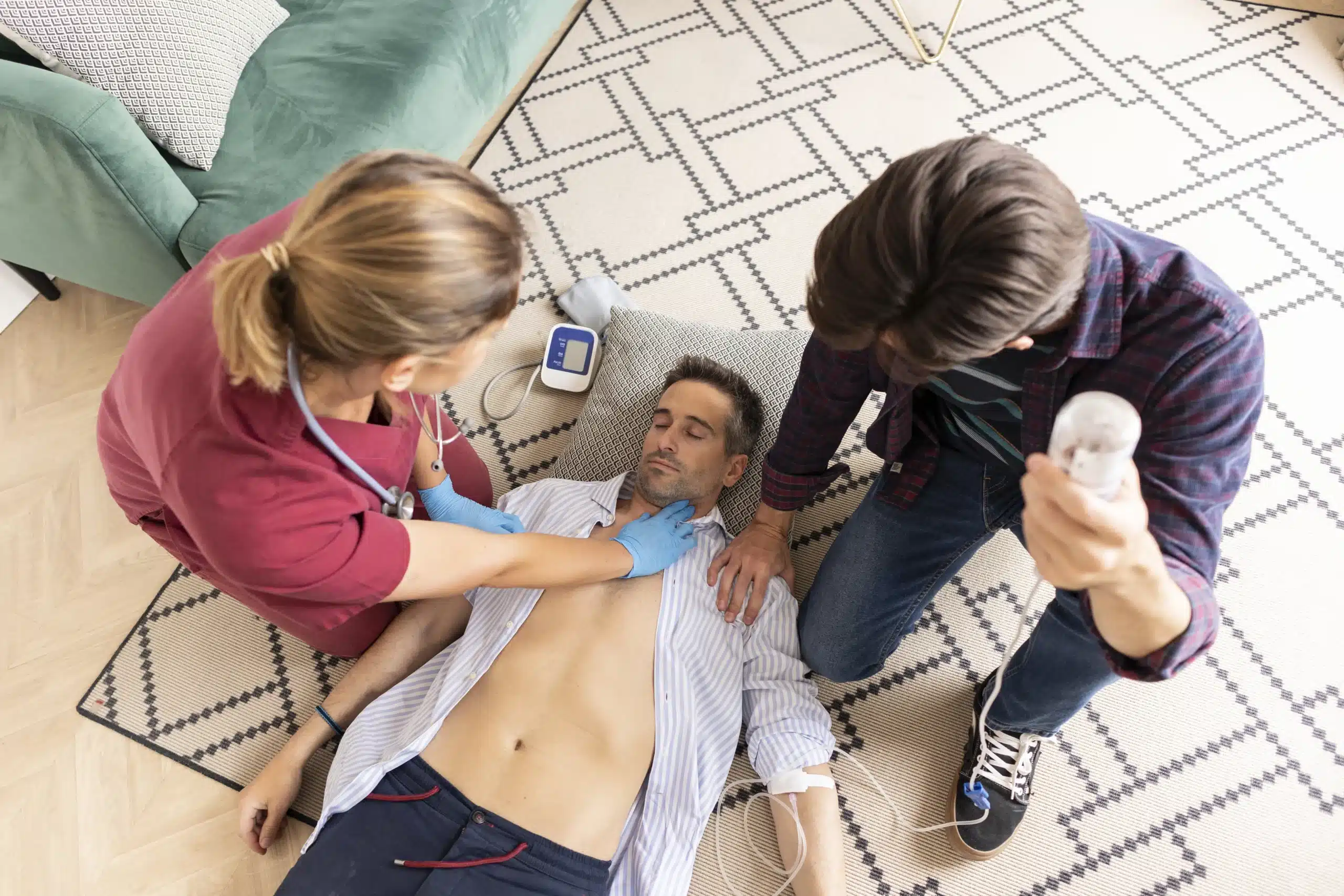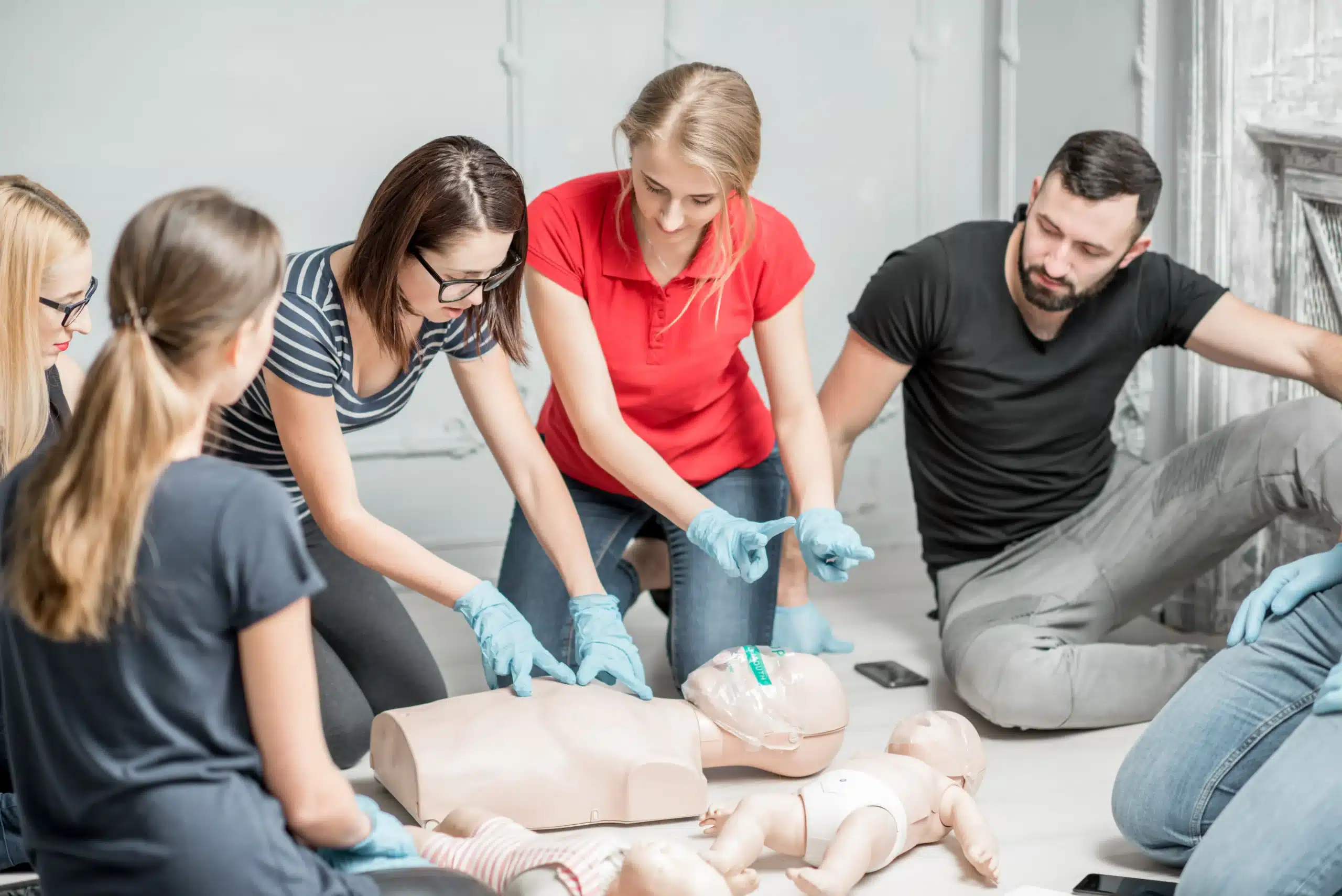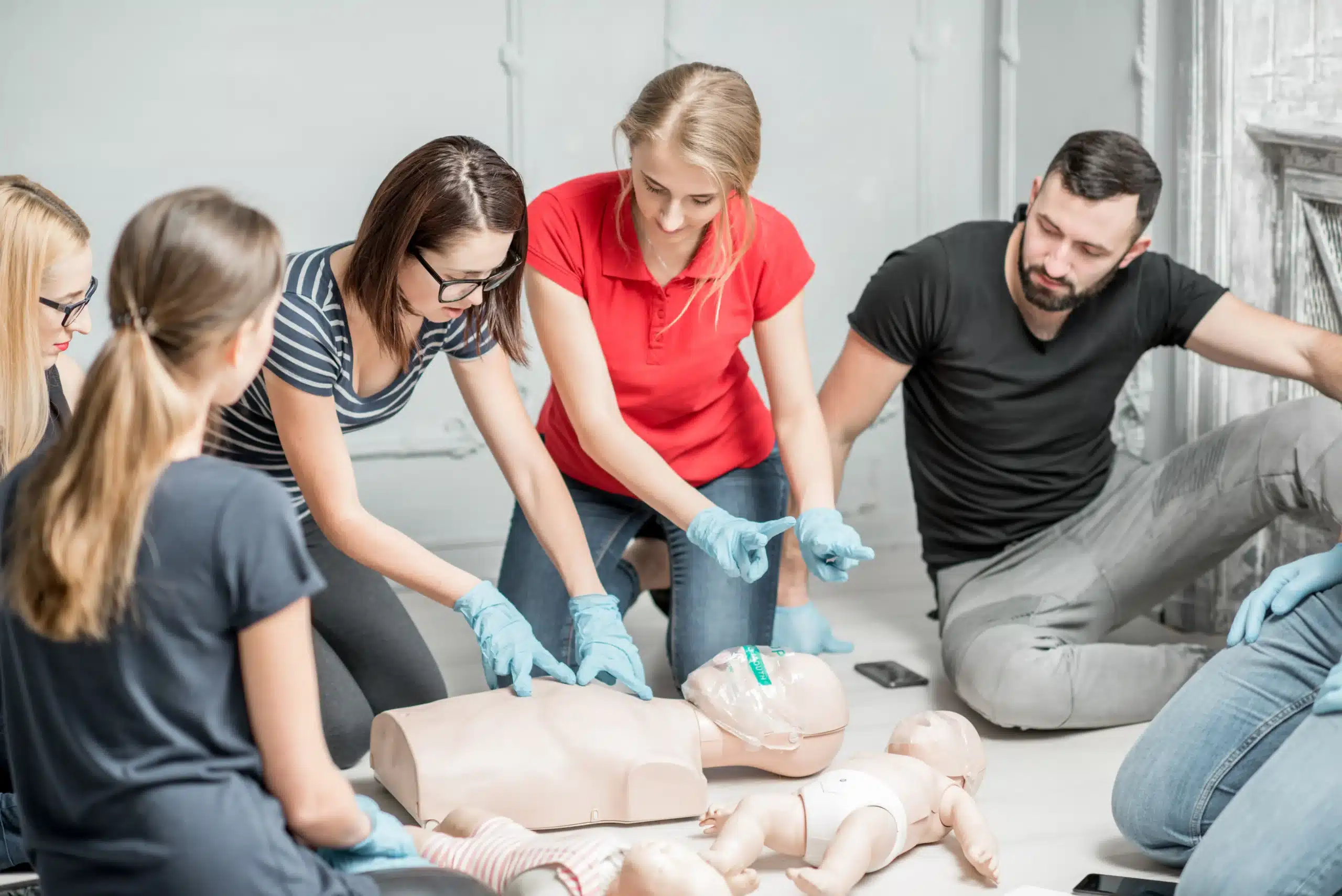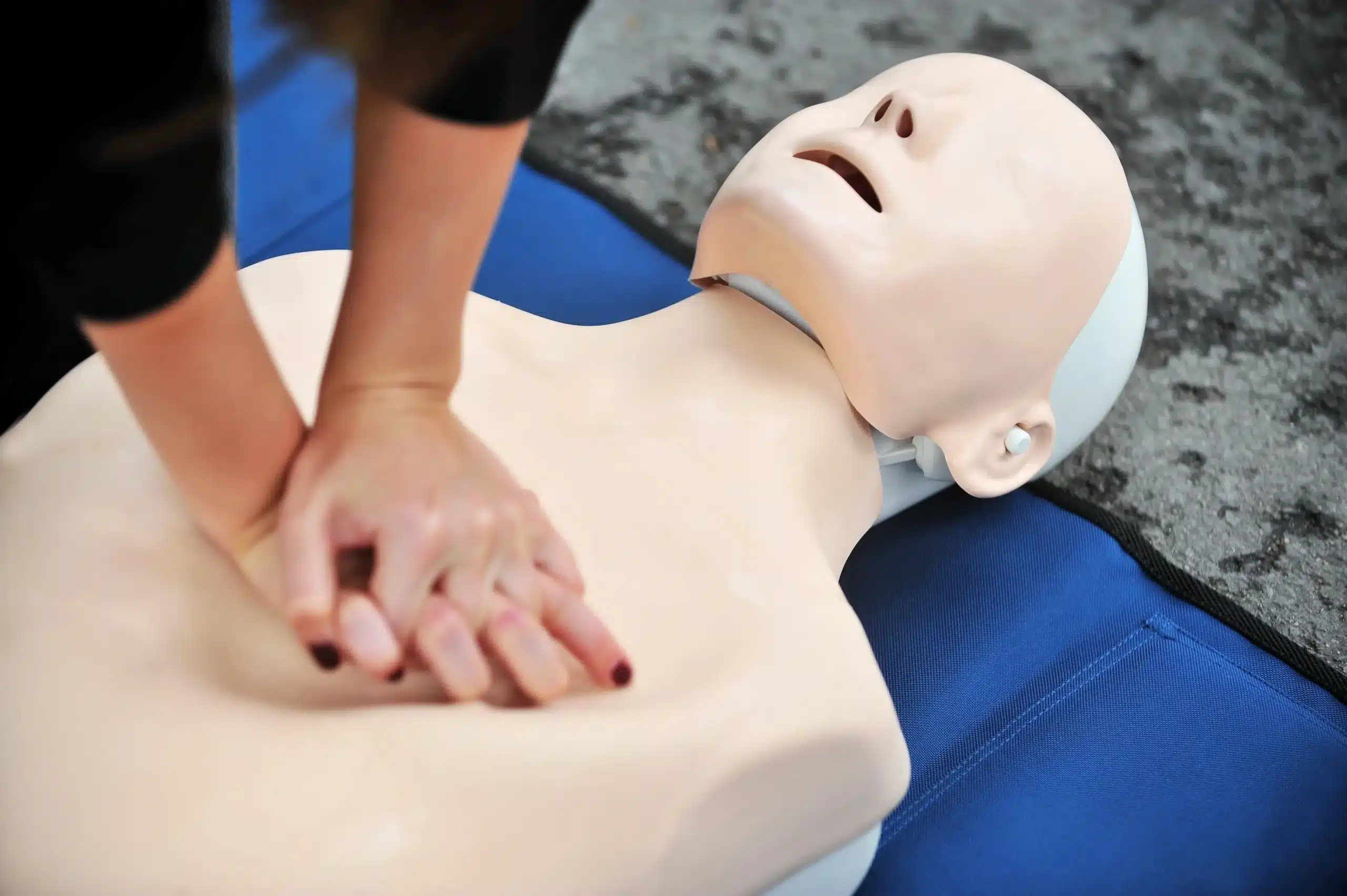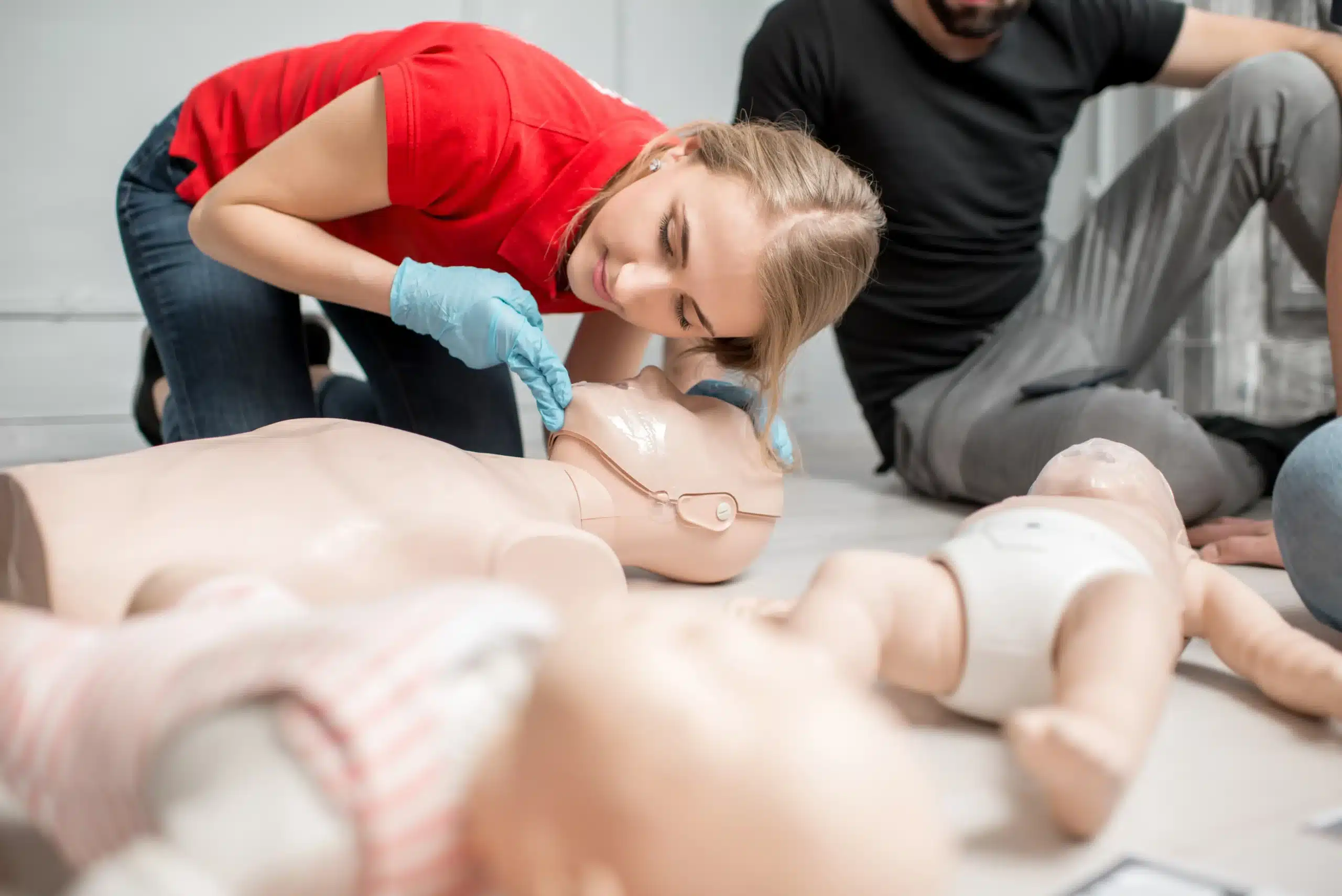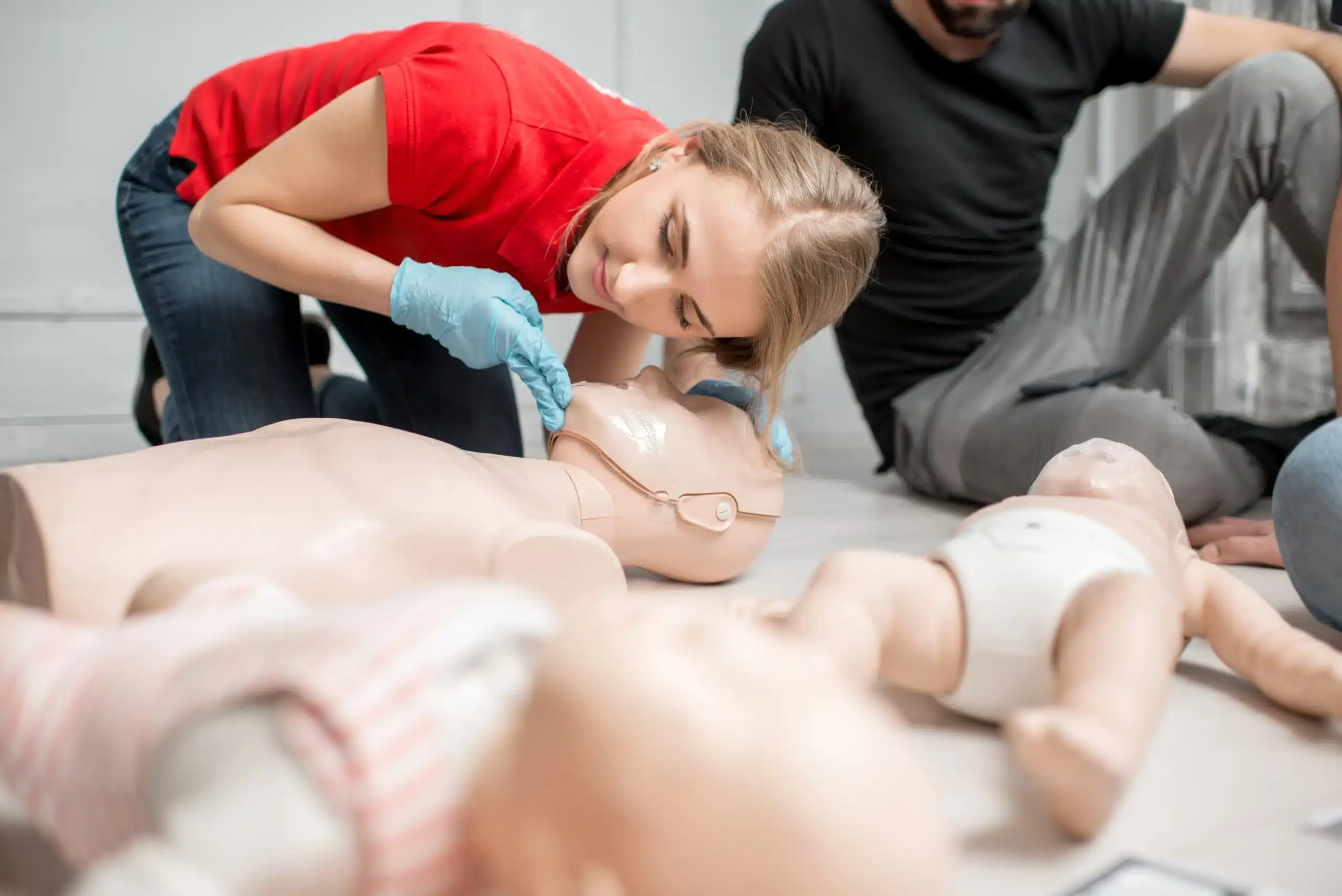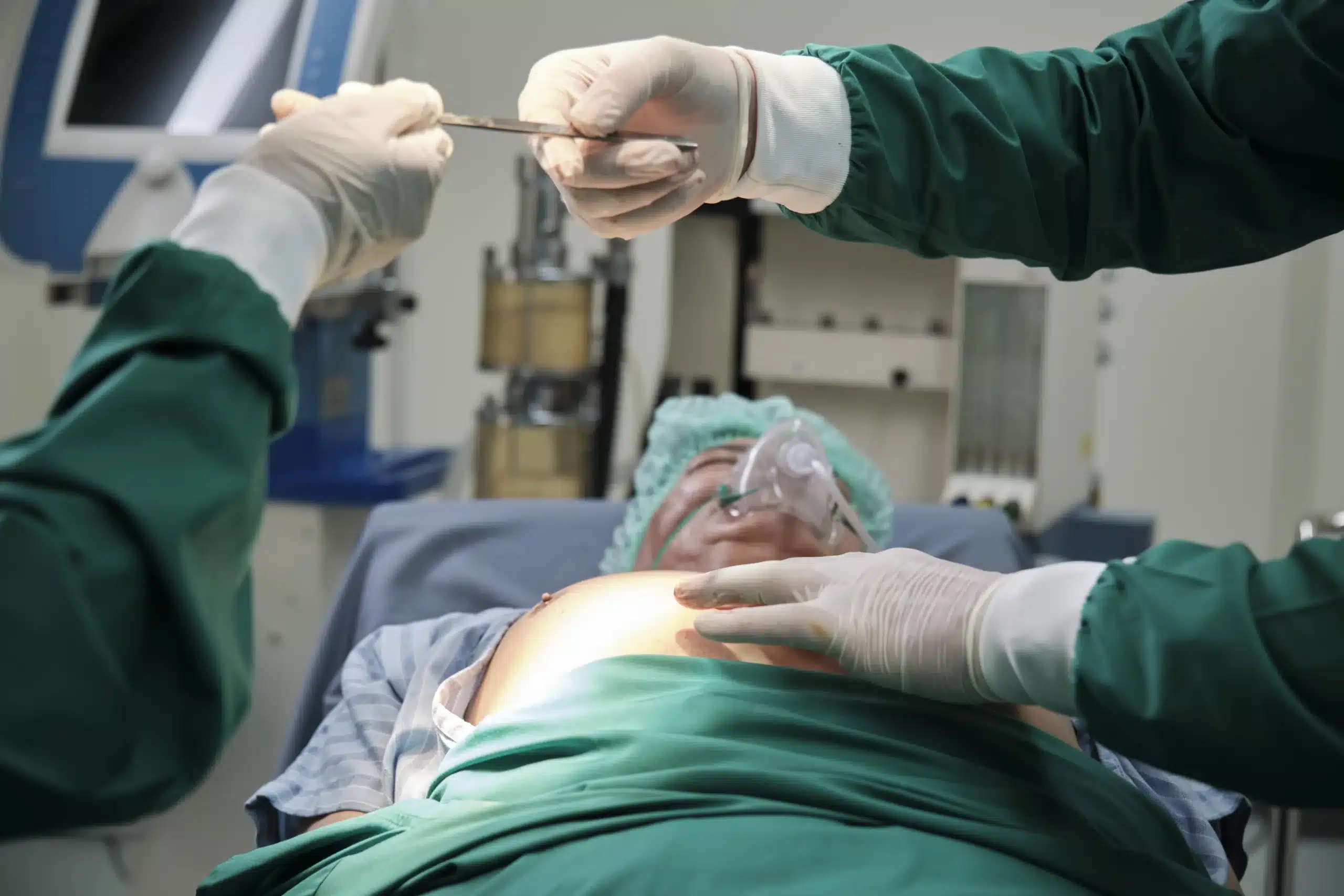From scraped knees to more serious injuries, medical emergencies can happen anytime, anywhere. Being prepared is key, and that’s where first aid training comes in. It equips you with the skills and confidence to respond effectively in critical situations, providing essential care until professional help arrives. This post is your guide to understanding first aid, from the basics to finding the perfect “first-aid classes near me.” We’ll explore the different types of first aid training, the benefits of learning locally, and how to choose the right course for your needs. Empower yourself to be a first responder in your community and make a real difference when it matters most.
Key Takeaways
- First aid skills are for everyone: Learning first aid empowers you to confidently respond to medical situations, from everyday injuries to life-threatening emergencies. Find a course that fits your lifestyle and learn how to provide immediate care when it matters most.
- Choose the right course for your needs: Consider your goals, workplace requirements, and preferred learning style when selecting a first aid class. Look for reputable providers like the Red Cross, AHA, or local organizations offering hands-on training and recognized certification.
- Local classes offer a personalized experience: Connect with your community while gaining skills tailored to your area’s specific needs and potential emergencies. Local instruction provides a supportive learning environment and valuable community connections.
What is First Aid Training?
First aid training gives you the skills to handle medical emergencies until professional help arrives. It’s about providing immediate care for injuries and illnesses, from minor cuts to life-threatening conditions. Think of it as a bridge between the incident and the arrival of paramedics or a trip to the hospital. First aid training is crucial for empowering individuals to confidently and effectively respond in emergencies, as described by MyCPR NOW.
Essential First Aid Skills
First aid courses teach essential skills like assessing a scene for safety, recognizing signs of different medical emergencies, and providing appropriate care. You’ll learn how to control bleeding, manage burns, care for fractures, and handle common medical issues like allergic reactions or heart attacks. These courses equip individuals with the skills and knowledge to respond effectively in various emergency situations, as emphasized by MyCPR Certification Online. These skills aren’t just for medical professionals—they’re valuable for everyone.
Why First Aid Training Matters
Learning first aid is an investment in your ability to help others and potentially save lives. It empowers you to take action in critical situations, providing comfort and care when it matters most. First aid training goes beyond bandages and CPR—it’s about being prepared to manage emergencies effectively. Whether you’re a parent, a teacher, a coach, or simply someone who wants to be prepared, first aid training is a valuable asset. Advancements in first aid training are making training more accessible and effective, ultimately contributing to saving more lives.
Types of First Aid Classes
First aid classes cover a wide range of skills and specializations. The best course for you will depend on your individual needs and goals. Let’s explore some common types of first aid training.
Basic First Aid
Basic first aid courses teach you fundamental skills to handle common injuries and emergencies. You’ll learn to manage bleeding, treat minor wounds like cuts and burns, and respond to situations like choking or allergic reactions. These courses benefit everyone, providing valuable skills you can use at any time. If you’re new to first aid, a basic first aid course is an excellent place to start.
CPR and AED Training
CPR and AED training teaches life-saving techniques for cardiac emergencies. You’ll learn how to perform CPR on adults, children, and infants, plus how to use an automated external defibrillator (AED). This training is essential for healthcare providers and highly recommended for anyone who wants to be prepared to help in a critical situation. CPR certification can empower you to make a real difference. Safety Training Seminars offers CPR and First Aid classes in Santa Rosa, CA.
Advanced First Aid
Advanced first aid courses go deeper into medical emergencies, covering more complex situations and advanced techniques. These courses often suit workplace first aiders or those working in higher-risk environments. They build on the skills learned in basic first aid, giving you a more comprehensive understanding of emergency medical care.
Wilderness First Aid
If you enjoy the outdoors, wilderness first aid is essential. These courses focus on handling medical emergencies in remote locations where access to medical care might be delayed. You’ll learn to improvise with limited resources and handle situations unique to the wilderness environment. Wilderness first aid training is crucial for hikers, campers, climbers, and anyone venturing into the backcountry.
Specialized First Aid Courses
Specialized first aid courses cater to specific professions or situations. Childcare providers, sports coaches, or industrial workers, for example, can find courses tailored to the particular hazards they might encounter on the job. These courses ensure the training is relevant to the specific risks and challenges of different professions.
Find First Aid Classes Near You
Finding the right first aid class is easier than you think. Whether you prefer online learning or a hands-on, in-person class, plenty of resources are available to fit your needs and schedule.
Online Search
A quick online search can uncover a wealth of first aid class options. Start by searching for “first aid classes near me” to generate local results. The Red Cross, for example, offers a variety of course formats, including in-person, online, and blended learning that combines online modules with an in-person skills session. You can explore their first aid classes. Another reputable provider, HSI, also offers a range of CPR and first aid courses and is known for its comprehensive training programs. Both organizations make it easy to locate classes through their websites.
Local Class Providers
Beyond national organizations, consider exploring local class providers. Check with community centers, hospitals, and universities in your area. Many offer first aid and CPR training programs at convenient times and locations. For instance, universities sometimes offer first aid and CPR courses. Local businesses also provide first aid and CPR training, often catering to both individuals and groups. Don’t overlook smaller training centers, which frequently hold open courses covering various first aid topics. These local providers can offer a more personalized learning experience and valuable connections within your community. Remember to check local listings or community bulletin boards for additional options.
Leading First Aid Training Providers
Finding the right first aid training provider is key to receiving quality instruction. Several respected organizations offer comprehensive programs, each with its own strengths. Here’s a closer look at some leading providers to help you make an informed choice:
American Red Cross
The American Red Cross is a well-known humanitarian organization offering a range of first aid training programs. They provide flexible learning options, including online and in-person classes, to accommodate various schedules and preferences. The Red Cross curriculum covers essential first aid skills, from treating minor injuries to managing life-threatening situations.
American Heart Association
The American Heart Association (AHA) is a leading authority on cardiovascular health and emergency care. They establish guidelines for CPR, AED, and first aid training, ensuring high standards of care. Many training centers, like Safety First Seminars, base their programs on AHA standards, providing certifications recognized across various healthcare professions. If you’re pursuing a healthcare career, AHA-compliant certification is often a requirement. Safety Training Seminars offers AHA-compliant CPR training, including BLS, ACLS, and PALS.
National Safety Council
The National Safety Council (NSC) focuses on workplace safety and offers various first aid training courses. Their training often aligns with Occupational Safety and Health Administration (OSHA) best practices, making them a good option for businesses wanting to enhance workplace safety. The NSC offers on-site training, bringing the instruction directly to your location, which can be convenient and cost-effective for larger groups.
Safety Training Seminars
Safety Training Seminars offers high-quality, affordable first aid and CPR training in a comfortable learning environment. They cater to both individuals and groups, with options for classes in English and Spanish. They also offer discounts for group classes. Their focus on creating a low-stress learning experience can be particularly helpful for those who feel anxious about learning these critical skills. Safety Training Seminars offers a low price guarantee.
Local Hospitals and Community Centers
Your local hospitals and community centers can also be valuable resources for first aid training. Many offer free or low-cost CPR classes to the public, making these life-saving skills accessible to everyone. These classes are often a great way to learn basic first aid and CPR techniques. You can find information on classes by checking your local hospital or community center’s website or by contacting them directly. Websites like MyCPRCertificationOnline can also help you find free CPR classes near you.
First Aid Class Costs
Knowing the cost of first aid training is an important part of choosing the right class. Let’s break down typical price ranges, explore ways to save, and look at the benefits of group training.
Typical Prices
First aid class costs vary based on several factors, including the level of training, the course provider, and your location. Basic first aid classes typically range from $40 to $100. Combined courses that include CPR and first aid certification often cost between $75 and $200. More advanced training, such as wilderness first aid or specialized certifications, can be more expensive. It’s always a good idea to check with various providers like Safety Training Seminars for specific pricing. For those seeking advanced certifications like ACLS or BLS, expect costs to be on the higher end of the spectrum. Safety Training Seminars offers a low price guarantee to ensure you’re getting a competitive rate.
Discounts and Promotions
Finding ways to save on first aid training is always helpful. Many training providers offer discounts for group registrations, students, or early bird sign-ups. Keep an eye out for promotions or deals on sites like Groupon, which sometimes feature discounted first aid and CPR classes. Safety Training Seminars also offers discounts for group classes, making it a cost-effective option for workplaces or community groups. You might also find promo codes for specific courses or training organizations.
Group Training
If you’re training with colleagues, friends, or family, group training can be a smart choice. Many providers offer discounted rates for group bookings. This lowers the cost per person while learning alongside people you know. Group training also allows for team building and shared learning experiences. Contact providers like Safety Training Seminars to inquire about group rates and customize a training session that fits your group’s needs. They offer a range of courses, including specialized training like RQI, which might be beneficial for healthcare professionals.
Class Length and Certification
Knowing how long a first aid class takes and how certification works is essential for planning. Let’s break it down:
How Long are First Aid Classes?
First aid class length varies depending on the level of training. A basic first aid course focusing on essential skills like treating minor cuts and burns might only take a few hours. More comprehensive courses covering CPR, AED use, and advanced techniques can range from a half-day to a full-day session. For example, the Heartsaver CPR/AED/First Aid course, often offered by providers like Safety Training Seminars, covers adult, child, and infant resuscitation and is ideal for people like fitness instructors and childcare providers. Check with your chosen provider for specifics. Safety Training Seminars also offers group discounts.
Certification Validity
Most first aid certifications, like those from the American Heart Association and the American Red Cross, are valid for two years. This timeframe ensures that certified individuals possess the most current knowledge and skills. Check your certificate for the exact expiration date.
Renewing Your Certification
To maintain your first aid credentials, you’ll need to renew your certification every two years. Renewal courses are typically shorter than the initial certification class, focusing on refreshing core skills and covering any updated guidelines. Many training providers, including Safety Training Seminars, offer recertification courses. Staying current with your certification ensures you’re prepared to respond effectively in an emergency. For those interested in RQI classes, Safety Training Seminars offers those as well. They also have a low price guarantee.
What Happens in a First Aid Class?
Curious about what goes on in a first aid class? It’s a blend of learning essential knowledge and practicing lifesaving skills. Here’s a glimpse of what you can expect:
Course Content
First aid classes cover a wide range of topics to prepare you for various emergencies. You’ll learn how to assess a situation and provide initial support to adults, children, and infants. This includes understanding how to recognize and respond to common medical emergencies like choking, allergic reactions, and sudden cardiac arrest. Many courses also teach you how to manage injuries such as cuts, burns, sprains, and fractures. The goal is to equip you with the knowledge to stabilize a person until professional medical help arrives. For specific course content, check out our CPR and first aid classes.
Hands-on Practice
Hands-on practice is a core element of effective first aid training. You’ll have the opportunity to apply what you learn in a safe and controlled environment. This often involves practicing techniques like CPR on mannequins, applying bandages and splints, and learning how to use an automated external defibrillator (AED). Many programs use a blended learning approach. This means you’ll complete an online portion before attending the in-person skills session, maximizing your hands-on learning time. This combination of online learning and practical application helps build confidence and ensures you’re ready to respond effectively in a real emergency. We incorporate this blended learning style at Safety Training Seminars.
Assessments
Most first aid courses include assessments to evaluate your understanding of the material and your ability to perform the necessary skills. These assessments may involve written tests, practical demonstrations, or a combination of both. Successfully completing the assessments earns you a certification, typically valid for two years. Renewal courses are available to keep your skills sharp and your certification current. Check out our convenient RQI classes for renewal options. This ongoing training ensures you remain prepared and confident in your ability to provide assistance when needed.
Choose the Right First Aid Class
So, you’re ready to learn first aid? Great! Finding the right class is the first step. It’s like choosing the right pair of shoes—you need the right fit for your specific needs. This section will walk you through the process.
Assess Your Needs
Before you start searching “first aid classes near me,” take a moment to think about why you want this training. Are you a parent hoping to be prepared for emergencies at home? A teacher responsible for a classroom of kids? Or maybe you work in a higher-risk environment like construction. Your reason for pursuing first aid training will heavily influence the type of course you need. For example, basic first aid and CPR training covers common injuries and emergencies, while wilderness first aid focuses on situations you might encounter hiking or camping. Consider your specific needs and the age group you’ll be working with, as effective first aid techniques often vary depending on age. If you’re interested in learning more, this helpful article on tailoring first aid training for different ages offers additional insights.
Compare Your Options
Once you have a general idea of what you’re looking for, compare your options. A wide variety of first aid courses are available, from basic to advanced. Some courses focus on specific skills, like using an AED, while others offer a more comprehensive approach. CTC Training’s overview of first aid courses is a great resource for understanding the different types of training. Also, think about your workplace requirements. Many professions require specific first aid certifications, so check with your employer or professional organization. This article on types of first aid courses offers helpful information on workplace-specific training.
Check Reviews
Finally, don’t forget to check reviews! Just like choosing a restaurant or hotel, reading reviews from past participants can give you valuable insights into the quality of instruction, course content, and the overall learning experience. Look for courses that offer personalized feedback and hands-on practice—these elements can significantly improve your learning. This article on future trends in first aid and CPR training and this study on the importance of electronic-based feedback in CPR training offer additional information on the importance of feedback. Choosing a reputable training provider can make all the difference.
Benefits of Local First Aid Training
Beyond the skills themselves, taking first aid training locally offers distinct advantages. It’s about more than just learning techniques—it’s about becoming a more prepared and connected member of your community. Here’s why opting for a local course can make all the difference:
Apply Skills Immediately
First aid training empowers you to respond effectively in emergencies. Learning in a local setting, like the one provided by Safety Training Seminars, allows you to practice these skills in a familiar environment. This can make a significant difference when you’re faced with a real emergency situation close to home. You’ll be more comfortable applying techniques and navigating familiar surroundings. This immediate application of skills makes local first aid classes incredibly valuable. For example, knowing the quickest route to the nearest hospital or understanding local emergency resources can be as crucial as knowing CPR.
Network with Others
Local first aid classes offer a chance to connect with people in your community. You’ll meet others who share your interest in safety and preparedness, creating a network of support. These connections can be invaluable, fostering a sense of community and shared responsibility. Safety First Seminars emphasizes this community aspect, creating a low-stress, supportive environment for learning and connecting with others. Building these relationships can also lead to ongoing learning and shared resources within your community.
Gain Community-Specific Knowledge
Local first aid training can be tailored to address the specific needs of your community. This includes considering demographics, common local emergencies, and even environmental factors. For example, a coastal community might emphasize water safety, while a mountainous region might focus on wilderness first aid. This community-specific approach ensures the training is relevant and effective, equipping you with the knowledge and skills most applicable to your surroundings. MyCPR NOW highlights the importance of tailoring first aid education to different age groups, further emphasizing the value of localized training. This tailored approach can make your training more engaging and ultimately more effective in real-world scenarios.
Related Articles
- First Aid Certification Santa Rosa: A Comprehensive Guide – Santa Rosa CPR Classes
- Workplace CPR and First-Aid Training Saves Lives
- Best First-Aid Training Providers in Santa Rosa – Santa Rosa CPR Classes
- Pediatric CPR & First Aid Training in Windsor – Santa Rosa CPR Classes
- CPR Courses in Windsor: Everything You Need to Know – Santa Rosa CPR Classes
Frequently Asked Questions
What’s the difference between basic first aid and advanced first aid? Basic first aid equips you with fundamental skills to handle common injuries like cuts, burns, and sprains. Advanced first aid delves into more complex medical emergencies and often involves more specialized techniques. Think of basic as your everyday toolkit and advanced as the next level of preparedness.
How do I choose the right first aid class for me? Consider your lifestyle, work environment, and reasons for wanting first aid training. If you’re a parent, a basic first aid and CPR class might be perfect. Outdoor enthusiasts should consider wilderness first aid. Healthcare professionals often require specific certifications like BLS or ACLS. Think about where you’ll most likely use these skills.
How long does it take to get first aid certified? The time commitment varies depending on the course type. Basic first aid can take a few hours, while more comprehensive courses, including CPR and AED training, might require a full day. Advanced certifications typically involve longer training periods. Check with your chosen provider for their specific course duration.
How much do first aid classes typically cost? Costs range from around $40 for basic first aid to $200 or more for combined CPR and first aid courses. Advanced and specialized training tends to be more expensive. Look for providers offering discounts for groups, students, or early registration.
Where can I find first aid and CPR classes near me? A quick online search is a great starting point. National organizations like the American Red Cross and the American Heart Association offer courses nationwide. Also, check with local hospitals, community centers, and private training providers for classes in your area.
